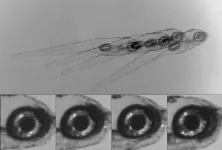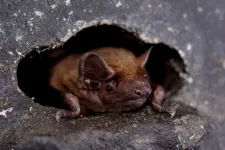(Press-News.org) Genomics is being integrated into biomedical research, medicine, and public health at a rapid pace, but the capacities necessary to ensure the fair, global distribution of benefits are lagging. A new special report outlines opportunities to enhance justice in genomics, toward a world in which genomic medicine promotes health equity, protects privacy, and respects the rights and values of individuals and communities.
The report, “Envisioning a More Just Genomics,” is a collaboration between The Hastings Center, a bioethics research institute, and the Center for ELSI Resources and Analysis (CERA), which focuses on the ethical, legal, and social implications of genetics and genomics. It was funded by the National Human Genome Research Institute.
“Much of genomics is publicly funded science that relies on samples and data from members of the public. This enormous public investment generates moral responsibilities across the genomics enterprise to develop the science and deliver its benefits in fair and trustworthy ways,” says Josephine Johnston, one of the report’s editors.
Examples of justice-related challenges explored in the special report include increasing the diversity of the genomics workforce, addressing deficiencies in the genomics evidence base caused by sampling bias, ensuring access to genomics research, and maximizing the ability for genomics to advance health equity at both the bench and the bedside.
The report is divided into four broad themes with key messages:
Racism and Inequity
Researchers who study human genetics could “de-weaponize genetics” (make it less exploitable by white nationalists and far-right political movements) by reforming research practices that make race appear to be genetic and feed eugenic and racist thinking.
They also could better measure environments, contexts, and the complexities of ethno-racial identification to prevent false racialization by consumers of scientific information.
Researchers could stop using race as a proxy for social and environmental exposures related to structural racism and discrimination and instead measure these exposures with validated tools and methods.
More participation by community members in translational genomic research could provide valuable local expertise and refocus attention on community determined health priorities.
Fair Inclusion in Research
To promote disability rights and justice in genomics, researchers could ensure that people with disabilities have equal access to the research process (for example, by participating in research and identifying what needs to be researched) and to precision medicine interventions that may benefit them.
Funding agencies could mandate that researchers engage communities and provide sustained funding for the maintenance of these partnerships.
Community members engaged in research could be fairly compensated; empowered with knowledge, skills, and leadership roles; and supported with investments in training programs.
Researchers could take responsibility for opposing misconceptions about individuals with neurodevelopmental differences or experiencing psychiatric symptoms and commit to fighting prejudice against them.
Data
Researchers could clearly explain and justify choice of databases or datasets and provide a rationale for data exclusion decisions as part of the funding application, ethics review, data access, and publication processes.
Data repositories could implement ethics training as a requirement for data access for research uses beyond that for which the data was collected.
For deidentified genomic datasets, institutions and funders could enforce data security measures, allow researchers and community members to redact or suppress data, and provide guidance on when data adjustments are necessary to protect individuals and communities. They could also ensure that privacy and data protection practices are responsive to the sociopolitical environment and are able to move quickly to protect marginalized populations in response to emerging data security threats.
New approaches to data sharing could democratize access to clinical and genetic data to advance health research in Africa and address African researchers’ concerns about exploitation by more resourced institutions in multinational research projects.
Expanding the Agenda
Researchers could investigate and resist nationalist ideologies and practices in the development of biotechnologies and application of bioscientific knowledge.
To ensure that priorities in conservation genomics are not determined by short-term interests, genomic and machine learning models could be used to study the long-term impacts of various environmental conservation strategies.
Conservationists could consult with and build capacity in communities, especially those that are most likely to be affected by climate change, as they plan genomics-informed conservation interventions.
To address the collective harms and benefits of genomics research for Indigenous peoples, the U.N. Declaration on the Rights of Indigenous Peoples could guide national genomics research governance.
Editors of the special report are Josephine Johnston, a senior research scholar at The Hastings Center and an associate professor of the University of Otago; Deanne Dunbar Dolan, a research scholar at the Stanford Center for Biomedical Ethics at Stanford Medicine and a coinvestigator at the Center for ELSI Resources and Analysis; Danielle M. Pacia, a research associate at The Hastings Center; Sandra Soo-Jin Lee, professor of medical humanities and ethics and the chief of the Division of Ethics at Columbia University; and Mildred K. Cho, professor of pediatrics and medicine at Stanford University and associate director of the Stanford Center for Biomedical Ethics.
The table of contents is here. All commentaries are open access.
For more information, please contact:
Susan Gilbert
Communications Director
The Hastings Center
gilberts@thehastingscenter.org
845-424-4040 x244
END
Expanding the agenda for more just genomics
Special report identifies actions to advance health equity
2025-01-02
ELSE PRESS RELEASES FROM THIS DATE:
Detecting disease with only a single molecule
2025-01-02
UC Riverside scientists have developed a nanopore-based tool that could help diagnose illnesses much faster and with greater precision than current tests allow, by capturing signals from individual molecules.
Since the molecules scientists want to detect -- generally certain DNA or protein molecules -- are roughly one-billionth of a meter wide, the electrical signals they produce are very small and require specialized detection instruments.
“Right now, you need millions of molecules to detect ...
Robert McKeown recognized for a half century of distinguished service
2025-01-02
NEWPORT NEWS, VA – For nearly half a century, Robert D. “Bob” McKeown has probed nuclear particles and educated rising generations of physicists. Now, the former deputy director for science at the U.S. Department of Energy’s Thomas Jefferson National Accelerator Facility is being honored for his outstanding career contributions with the 2024 American Physical Society’s Division of Nuclear Physics (DNP) Distinguished Service Award.
McKeown is recognized for his work in experimental physics and his extensive leadership in the broader ...
University of Maryland awarded $7.8 million to revolutionize renewable energy for ocean monitoring devices
2025-01-02
University of Maryland researcher Stephanie Lansing received a Phase 1 $7.8M award from Defense Advanced Research Projects Agency (DARPA) to develop and test a biologically fueled energy source to power research and sensing devices throughout the world’s oceans.
There is a vast array of ocean sensing devices that provide critical information for understanding marine environments, monitoring climate change and maintaining national security. Many of these sensors are currently powered by long underwater cables or lithium-ion batteries.
Lansing is leading a large, collaborative effort that will overcome the need for batteries and ship-based or shore-based ...
Update: T cells may offer some protection in an H5N1 ‘spillover’ scenario
2025-01-02
Update: This LJI study was previously shared on bioRxiv in September 2024. Since then, health officials have reported a rise in H5N1 “bird flu” infections in humans, including the first severe H5N1 human case requiring hospitalization. Officials have also reported increased cases in feline species, including an outbreak among big cats at a wildlife sanctuary. In California, the recent spread of H5N1 to dairy herds in Southern California prompted Gov. Gavin Newsom to declare a “State of Emergency” on Dec. 18, 2024.
LA JOLLA, CA—New research led by scientists at La Jolla Institute for Immunology (LJI) ...
Newborn brain circuit stabilizes gaze
2025-01-02
An ancient brain circuit, which enables the eyes to reflexively rotate up as the body tilts down, tunes itself early in life as an animal develops, a new study finds.
Led by researchers at NYU Grossman School of Medicine, the study revolves around how vertebrates, which includes humans and animals spanning evolution from primitive fish to mammals, stabilize their gaze as they move. To do so they use a brain circuit that turns any shifts in orientation sensed by the balance (vestibular) system in their ears into an instant counter-movement by their eyes.
Called ...
Bats surf storm fronts during continental migration
2025-01-02
Birds are the undisputed champions of epic travel—but they are not the only long-haul fliers. A handful of bats are known to travel thousands of kilometers in continental migrations across North America, Europe, and Africa. The behavior is rare and difficult to observe, which is why long-distance bat migration has remained an enigma. Now, scientists from the Max Planck Institute of Animal Behavior (MPI-AB) have studied 71 common noctule bats on their spring migration across the European continent, providing a leap in understanding this mysterious behavior. Ultra-lightweight, intelligent sensors attached ...
Canadian forests are more prone to severe wildfires in recent decades
2025-01-02
Climate change is driving more intense wildfires in Canada, according to a new modeling study, with fuel aridity and rising temperatures amplifying burn severity, particularly over the last several decades. The findings underscore the growing impact of climate change on wildfire behavior, with the most severe effects concentrated in Canada’s northern forests. Fueled by ongoing climate change, Canada – one of the most forested and fire-prone regions in the Northern Hemisphere – is grappling with increasingly severe and prolonged wildfire seasons. ...
Secrets of migratory bats: They “surf” storm front winds to save energy
2025-01-02
A species of migrating bat “surfs” the warm winds of incoming storm fronts to conserve energy, according to a study that used tags to track the tiny animals on their long journeys across central Europe. The findings offer new insights into how weather, physiology, and environmental factors shape bats’ seasonal migration patterns. While bird migration is well-documented and studied, this is not the case for seasonal migration of bats – particularly the few long-distance, migratory species. These nocturnal travelers face substantial challenges, ...
Early life “luck” among competitive male mice leads to competitive advantage overall
2025-01-02
Early life "luck" plays a pivotal role in shaping individuality and success, particularly for males, according to a new study in mice. In male animals, competitive social dynamics amplified small initial differences into lifelong disparities in fitness. The findings highlight parallels between biological competition and societal inequalities and they demonstrate how chance events can drive divergent outcomes even among genetically identical individuals. Contingency (colloquially, “luck”) refers to the role of chance in shaping outcomes. It is a critical factor in both biological and social sciences, ...
A closer look at the role of rare germline structural variants in pediatric solid tumors
2025-01-02
Largescale changes in the genome inherited from parents are significant risk factors for pediatric solid tumors, such as Ewing sarcoma, neuroblastoma, and osteosarcoma, according to a new study. The findings, which highlight the role of germline structural variants (SVs) in early genome instability, provide new insights into the genetic underpinnings of pediatric cancers and open doors for improved diagnostic and treatment strategies. Unlike adult cancers, which often result from environmental factors or DNA damage built up over time, ...
LAST 30 PRESS RELEASES:
Reducing social isolation protects the brain in later life
Keeping the heart healthy increases longevity even after cancer
Young adults commonly mix cannabis with nicotine and tobacco
Comprehensive review illuminates tau protein's dual nature in brain health, disease, and emerging psychiatric connections
Book prepares K-12 leaders for the next public health crisis
Storms in the Southern Ocean mitigates global warming
Seals on the move: Research reveals key data for offshore development and international ecology
Sports injuries sustained during your period might be more severe
World's first successful 2 Tbit/s free-space optical communication using small optical terminals mountable on satellites and HAPS
Can intimate relationships affect your heart? New study says ‘yes’
Scalable and healable gradient textiles for multi‑scenario radiative cooling via bicomponent blow spinning
Research shows informed traders never let a good climate crisis go to waste
Intelligent XGBoost framework enhances asphalt pavement skid resistance assessment
Dual-function biomaterials for postoperative osteosarcoma: Tumor suppression and bone regeneration
New framework reveals where transport emissions concentrate in Singapore
NTP-enhanced lattice oxygen activation in Ce-Co catalysts for low-temperature soot combustion
Synergistic interface engineering in Cu-Zn-Ce catalysts for efficient CO2 hydrogenation to methanol
COVID-19 leaves a lasting mark on the human brain
Scientists use ultrasound to soften and treat cancer tumors without damaging healthy tissue
Community swimming program for Black youth boosts skills, sense of belonging, study finds
Specific depressive symptoms in midlife linked to increased dementia risk
An ‘illuminating’ design sheds light on cholesterol
Who is more likely to get long COVID?
Study showcases resilience and rapid growth of “living rocks”
Naval Research Lab diver earns Office of Naval Research 2025 Sailor of the Year
New Mayo-led study establishes practical definition for rapidly progressive dementia
Fossil fuel industry’s “climate false solutions” reinforce its power and aggravate environmental injustice
Researchers reveal bias in a widely used measure of algorithm performance
Alcohol causes cancer. A study from IOCB Prague confirms damage to DNA and shows how cells defend against it
Hidden viruses in wastewater treatment may shape public health risks, study finds
[Press-News.org] Expanding the agenda for more just genomicsSpecial report identifies actions to advance health equity


